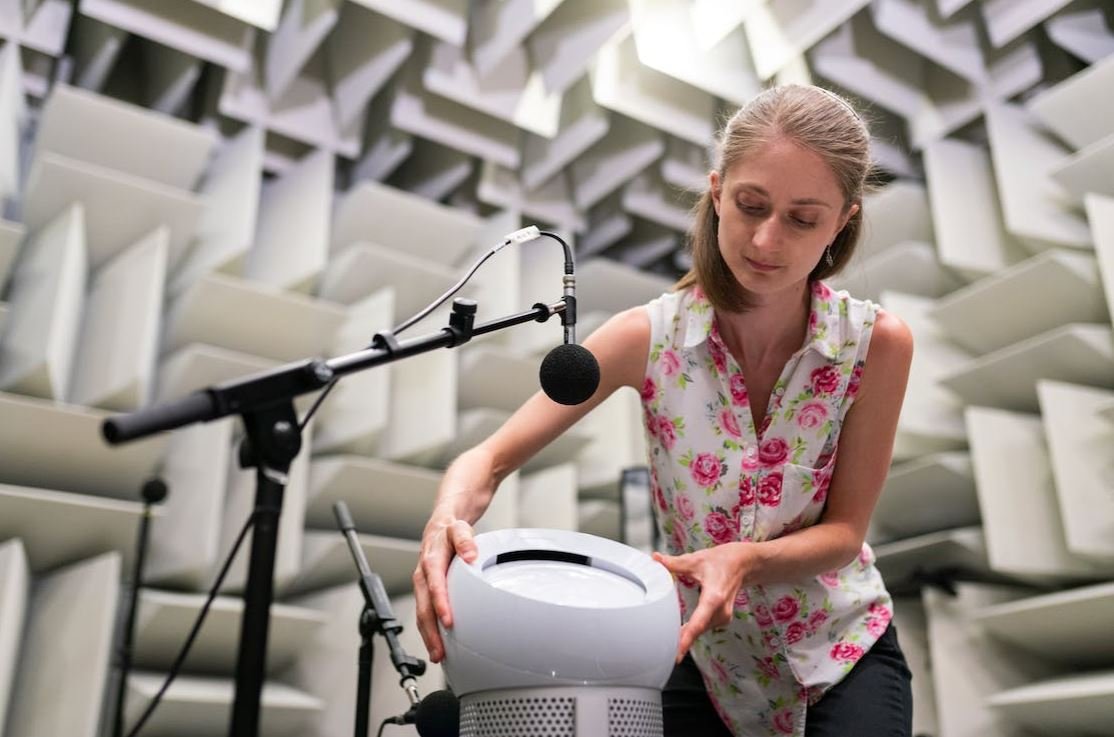Picture Prompts Sentence Writing
Picture prompts sentence writing is an engaging activity that promotes creativity, vocabulary expansion, and grammar development. Utilizing visual stimuli, such as images or illustrations, motivates students to create meaningful sentences based on what they observe. It can be used in various educational settings, from language arts classrooms to ESL programs. In this article, we will explore the benefits of picture prompts sentence writing and provide practical ideas for implementation.
Key Takeaways
- Picture prompts sentence writing facilitates creativity and vocabulary expansion.
- It improves grammar skills and sentence structure.
- Picture prompts can be used in different educational contexts.
- Providing guidance and scaffolding is essential for effective implementation.
The Benefits of Picture Prompts Sentence Writing
One of the main advantages of using picture prompts for sentence writing is that it encourages **creative thinking** and imagination. When students are exposed to visual stimuli, they are prompted to generate unique and *imaginative* sentences that describe the scene or depict a story.
Additionally, picture prompts help to expand **vocabulary**. By observing specific details in the image, students are more likely to use new words, enhancing their lexical repertoire. This exposure to diverse vocabulary contributes to stronger written and spoken communication skills.
Another significant aspect of picture prompts sentence writing is the improvement of **grammar** and **sentence structure**. As students construct sentences to describe what they see, they are prompted to consider grammar rules and apply them correctly. This practice helps solidify their understanding of sentence components, such as subject-verb agreement and correct word order.
Implementation Ideas
When utilizing picture prompts sentence writing in the classroom, it is crucial to provide **guidance** and **scaffolding** to support students’ learning. Here are some practical ideas:
- Introduce vocabulary: Familiarize students with the vocabulary related to the picture prompt beforehand to enhance their ability to describe what they see.
- Brainstorming: Have a group discussion where students share their observations and ideas about the image to generate enthusiasm and inspiration.
- Modeling: Demonstrate how to construct a sentence using the picture prompt, emphasizing the correct use of grammar and sentence structure.
- Collaborative writing: Encourage students to work in pairs or small groups, discussing and refining their sentences together.
Examples of Picture Prompts Sentence Writing
Let’s explore some examples of picture prompts sentence writing to illustrate the practical application:
| Image | Sentence |
|---|---|
 |
The *majestic sunset* painted vibrant colors across the sky. |
| Image | Sentence |
|---|---|
 |
The playful *puppies* chased each other in the lush green fields. |
| Image | Sentence |
|---|---|
 |
The *ancient castle* stood tall, imbued with centuries of history and secrets. |
Conclusion
Picture prompts sentence writing is a valuable educational tool that promotes creativity, vocabulary expansion, and grammar development. By using visual stimuli, students can create engaging sentences and improve their language skills. With proper guidance and support, this activity can be incorporated effectively into various educational settings, fostering a love for language and writing expression.

Common Misconceptions
Paragraph 1: A Picture Is Worth a Thousand Words
One common misconception is that a picture can fully convey an entire story or message without any additional context. While images can certainly evoke emotions and provide visual information, they often require further explanation.
- Pictures may need captions or descriptions to clarify their meaning.
- Contextual information is often necessary to fully understand the significance of a picture.
- Images can be easily misinterpreted or manipulated, so critical analysis is essential.
Paragraph 2: All Pictures Are Objective
Many people believe that pictures always present an objective representation of reality. However, it’s important to recognize that images are captured from a specific perspective and can be subject to bias, manipulation, or selective framing.
- Photographers can choose what to include or exclude from a picture, shaping the narrative.
- Photo editing software can alter the appearance of a subject or scene.
- Photojournalistic images can be staged or edited to convey a desired message.
Paragraph 3: Pictures Are Universal
Another misconception is that visual imagery is universally understood and interpreted the same way by all viewers. However, people from different cultures or backgrounds may have different associations, perceptions, and interpretations of the same image.
- Symbolism in images can vary across different cultures or regions.
- The emotional impact of an image may differ depending on an individual’s personal experiences.
- Images can be open to multiple interpretations, leading to diverse understandings.
Paragraph 4: Pictures Are Always Authentic
There is a common belief that pictures are always an accurate reflection of reality. Nevertheless, photographers and image creators have the ability to manipulate and stage scenes, potentially distorting the truth or creating a false narrative.
- Images can be digitally altered or enhanced to change their appearance or meaning.
- Persuasive framing or angle selection can influence the viewer’s perception.
- Commercial or advertising images often undergo significant editing for promotional purposes.
Paragraph 5: Pictures Are Self-Explanatory
Some people assume that pictures are able to convey information without any need for verbal or written explanations. However, context, cultural knowledge, and prior understanding are often required to fully comprehend the intended message of an image.
- Images may require additional context or captions to communicate their intended meaning.
- Cultural references or symbols portrayed in an image may not be universally understood.
- Background information about the subject or context can enhance understanding and interpretation.

Interesting Pictures and Their Corresponding Sentences
Here are ten intriguing and captivating pictures that can serve as prompts for sentence writing. Each picture can inspire a variety of creative and fascinating sentences. Let your imagination run wild!
1. Dreamy Sunset on the Beach
A breathtaking, golden sunset on a tranquil beach. The warm glow of the sun casts enchanting colors across the sky, evoking a sense of peace and serenity. Let this captivating image inspire you to write a sentence that captures the beauty and tranquility of the moment.
2. Towering Skyscrapers at Dusk
The city skyline is transformed at dusk when the lights of towering skyscrapers come to life. As darkness falls, the vibrant glow from each window creates a mesmerizing view. Write a sentence that describes the bustling energy and magnificence of the urban landscape as night descends.
3. Majestic Mountain Range
A majestic mountain range stretches as far as the eye can see. Snow-capped peaks rise proudly, standing tall against the vivid blue sky. Let this spectacular panorama inspire you to craft a sentence that captures the grandeur and awe-inspiring presence of nature’s beauty.
4. Vibrant Fields of Blooming Flowers
Fields of brightly colored flowers stretch endlessly, creating a stunning tapestry of hues. The vibrant petals sway gently in the breeze, bringing a sense of joy and happiness. Allow this vibrant image to inspire you to write a sentence that embodies the essence of beauty and the wonders of nature.
5. Serene Forest Bathed in Sunlight
A serene forest is bathed in heavenly sunlight, casting dappled shadows on the lush green foliage. The air is filled with a calming stillness, inviting tranquility and peace. Let the serenity of this image guide you in crafting a sentence that captures the tranquil atmosphere of the woodland.
6. Lively European Street Market
An animated European street market comes alive with vibrant colors, enticing scents, and the delightful chatter of locals and tourists alike. Stalls brimming with fresh produce, handmade crafts, and mouthwatering delicacies add to the immersive atmosphere. Use this lively image to inspire a sentence that immerses readers in the hustle and bustle of a vibrant market.
7. Mystical Northern Lights
The ethereal dance of the Northern Lights paints the night sky with mesmerizing colors, illuminating the darkness with a celestial glow. This rare natural phenomenon evokes a sense of wonder and awe. Write a sentence that captures the enchanting beauty and mysticism of the Northern Lights.
8. Ancient Ruins of a Forgotten Civilization
Amidst an overgrown jungle, ancient ruins stand as remnants of a once-great civilization. Weathered stone structures and moss-covered statues whisper tales of a bygone era, invoking an atmosphere of mystery and intrigue. Let this enigmatic image inspire a sentence that unravels the secrets of the forgotten world.
9. Dramatic Thunderstorm Over a City
A dramatic thunderstorm sweeps across the city, with lightning streaking through the darkened sky and torrents of rain pouring down. The crackling energy and raw power of the storm create an atmosphere filled with intensity and tension. Craft a sentence that captures the awe-inspiring force of nature during a thunderstorm.
10. Tranquil Zen Garden
A serene Zen garden, meticulously designed with carefully arranged rocks, raked patterns in the gravel, and lush greenery, offers a place for peaceful contemplation and meditation. The simplicity and balance of the garden encourage a sense of harmony and tranquility. Write a sentence that reflects the serene ambiance and the meditative qualities of the Zen garden.
In conclusion, pictures can serve as powerful prompts for sentence writing. By capturing a specific moment or scenery, these images evoke various emotions and inspirations, allowing us to craft captivating sentences that bring words to life. Explore the vast possibilities of sentence writing using visual stimuli and discover the beauty of creativity unleashed.
Frequently Asked Questions
How can picture prompts be used to improve sentence writing skills?
Picture prompts can be used to enhance sentence writing skills by providing visual stimuli that can inspire and spark creativity in students. When presented with a picture, students can observe the details, think critically, and create descriptive sentences. This practice helps students develop their vocabulary, grammar, and writing skills.
What age group is picture prompts sentence writing suitable for?
Picture prompts sentence writing is suitable for students of various age groups. It can be tailored to meet the needs of elementary, middle school, and high school students. Additionally, adults who require assistance with sentence writing, such as ESL learners or individuals honing their language skills, can also benefit from this approach.
Are there any specific strategies to incorporate picture prompts into sentence writing exercises?
Yes, there are several strategies to incorporate picture prompts into sentence writing exercises, such as:
- Encouraging students to observe every detail in the picture and write sentences describing what they see
- Using the picture as a starting point for a story or narrative
- Asking students to imagine themselves within the picture and write about their experiences
- Prompting students to write sentences using specific grammar structures or vocabulary words related to the picture
What are the benefits of using picture prompts in sentence writing?
Using picture prompts in sentence writing offers numerous benefits for students, including:
- Enhancing observation and descriptive skills
- Stimulating creativity and imagination
- Developing vocabulary and language proficiency
- Improving grammar and sentence structure
- Encouraging critical thinking skills
Where can I find picture prompts for sentence writing?
Picture prompts can be found in various resources, such as:
- Online educational platforms
- Teaching websites and blogs
- Language arts textbooks and workbooks
- Picture books or storybooks
- Printable materials available for free or purchase
How can I make picture prompts more engaging for students?
To make picture prompts more engaging for students, consider incorporating the following strategies:
- Allowing students to choose their picture prompts
- Encouraging collaborative activities, such as group discussions or storytelling with the pictures
- Using multimedia platforms to showcase the pictures, such as displaying them on a projector or interactive whiteboard
- Providing positive reinforcement and feedback on students’ sentence writing
Can picture prompts be used for all types of sentence writing activities?
Yes, picture prompts can be used for various sentence writing activities, such as:
- Writing descriptive sentences
- Creating narratives or stories
- Constructing informative sentences
- Practicing grammar structures or vocabulary usage
Are there any tips for incorporating picture prompts in sentence writing activities?
Yes, here are some tips for incorporating picture prompts in sentence writing activities:
- Start with simple and familiar pictures, gradually increasing the complexity as students progress
- Provide scaffolding and support, such as sentence starters or word banks, for struggling students
- Encourage peer collaboration and feedback on each other’s sentence writing
- Allow students to present their sentences orally or in written form for extra practice and confidence-building
What assessment methods can be used to evaluate students’ progress in picture prompts sentence writing?
Various assessment methods can be implemented to evaluate students’ progress, including:
- Reviewing students’ written sentences and providing constructive feedback
- Assigning writing assignments or quizzes focusing on picture prompts
- Conducting peer reviews and evaluations
- Engaging in class discussions or presentations where students share their sentence writing




